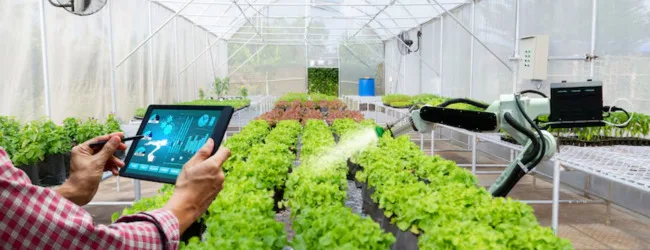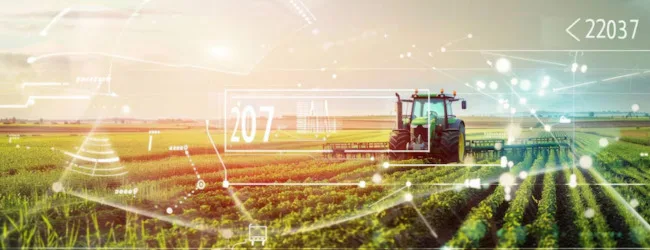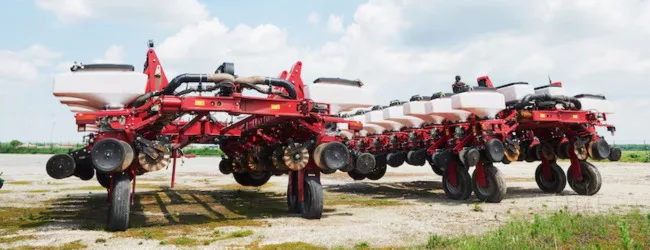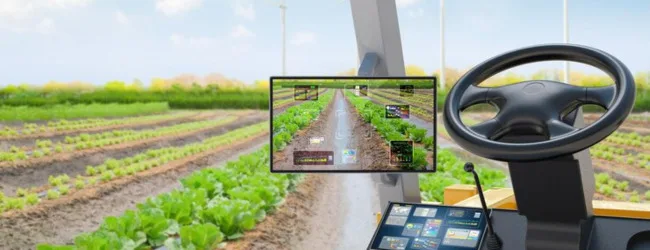Table of contents
Modern farming is the use of advanced technologies, equipment, and scientific techniques to improve farm productivity, sustainability, and profitability. In India, where agriculture is a primary livelihood, adopting modern farming can solve problems like low yield, soil degradation, and water scarcity.
What is Modern Farming?

Modern farming refers to agricultural practices that use scientific knowledge, automation, high-yield crop varieties, precision tools, and sustainable practices to increase food production.
Key Elements:
- Use of chemical fertilisers, pesticides, and hybrid seeds
- Mechanised tools like tractors, harvesters
- Technology like drones, IoT, and AI-based sensors
- Smart irrigation methods (drip & sprinkler)
Why India Needs Modern Farming
India’s traditional farming is struggling with low productivity and climate change. With over 54.6% of India’s population involved in agriculture and contributing just 18.3% to GDP (Ministry of Agriculture 2023), modern methods are essential.
Challenges Traditional Farmers Face:
- Irregular rainfall
- Soil degradation
- Water shortages
- Pest attacks
Modern farming is the solution to:
- Improve yields
- Reduce labour dependency
- Conserve water
- Maintain soil health
Modern Farming Methods
Modern farming methods can significantly increase productivity and reduce manual effort.
Uses GPS, satellite imagery, and IoT sensors to manage crops more efficiently.
2. Organic and Natural Farming
Reduces chemical usage by using compost, manure, and bio-pesticides.
3. Hydroponics & Aeroponics
Grow crops in nutrient-rich water or air mist, suitable for cities.
Farming in stacked layers using LED lights and climate control.
5. Drip & Sprinkler Irrigation
Conserves water by delivering it directly to plant roots.
6. Mechanisation
Tractors, rotavators, and harvesters reduce manual labour and time.
7. Biotechnology
Use of GM crops and hybrid seeds for disease resistance and high yield.
💡 Pro Tip: If you want to start a Business but have too many doubts, connect with a Business expert from Boss Wallah for guidance – Check Out
Benefits of Modern Farming

Modern farming offers several advantages:
- Increased yield: Up to 30%-50% more than traditional methods
- Water efficiency: Saves 40%-60% of water
- Time-saving: Mechanisation reduces labour hours
- Higher income: Better produce quality & quantity
- Sustainability: Maintains long-term soil health
| Benefit | Traditional Farming | Modern Farming |
|---|---|---|
| Yield | Low | High |
| Water Use | Excessive | Efficient |
| Labor | High | Low |
| Inputs | Organic/manual | Scientific/mechanized |
ALSO READ | Commercial Grain Farming: A Complete Guide (2025)
Modern Farming Chart & Diagrams
Better understand the distinctions between traditional and modern farming practices, the following table provides a comprehensive comparison:
| Aspect | Traditional Farming | Modern Farming |
|---|---|---|
| Labor | Predominantly manual labor | Mechanised equipment reduces manual effort |
| Irrigation | Dependent on rainfall or basic canal systems | Advanced systems like drip and sprinkler irrigation |
| Seeds | Utilises local or indigenous seed varieties | Employs High-Yielding Varieties (HYVs) and Genetically Modified (GM) seeds |
| Fertilizers | Organic fertilisers such as compost and manure | Chemical fertilisers like NPK (Nitrogen, Phosphorus, Potassium) blends |
| Pest Control | Natural methods or limited pesticide use | Systematic application of chemical pesticides and integrated pest management |
| Technology Usage | Minimal to no technological integration | Incorporates GPS, drones, IoT sensors, and AI-driven analytics |
| Crop Yield | Generally lower yields | Significantly higher yields due to optimised practices |
| Environmental Impact | Lower immediate impact, but potential for overuse of natural resources | Aims for sustainability but may pose risks if inputs are mismanaged |
| Capital Investment | Lower initial investment | Higher initial costs with potential for greater long-term returns |
| Scalability | Limited scalability due to manual processes | Highly scalable with the adoption of technology and mechanisation |
ALSO READ | Multilayer Farming: A Comprehensive Guide
Do Modern Farming Methods Require More Industry Inputs?

Yes, they do — but for good reason.
Modern methods use:
- Industry-manufactured fertilisers for balanced nutrition
- Pesticides & herbicides for better pest control
- Machinery built by industrial manufacturers
- IoT devices, sensors, and software developed by AgriTech startups
While the input cost is higher, ROI is also higher with more productivity and income.
Real-Life Examples from India
1. AgroStar (Maharashtra)
Uses a mobile app to deliver fertilisers and expert advice to farmers.
2. Kheyti (Telangana)
Introduced “Greenhouse-in-a-box” for small farmers, increasing yields by 7X.
3. EM3 Agri Services (Uttar Pradesh)
Offers “farming as a service” where farmers rent tractors and harvesters.
Modern Farming Opportunities in India

Modern farming offers income opportunities beyond selling crops:
- Crop Sales: Higher yields mean more market-ready produce
- By-Products: Straw, husks, and biomass for fuel and fodder
- Agri-Tourism: Farms open to schools and tourists
- Contract Farming: Tie-ups with companies for guaranteed prices
- Value Addition: Food processing units for jams, juices, pickles
Major Crops Using Modern Methods in India:
- Wheat (Punjab)
- Rice (Andhra Pradesh)
- Sugarcane (Uttar Pradesh)
- Tomato (Karnataka)
- Cotton (Maharashtra)
Need Expert Guidance?
Starting a business can be challenging, but you don’t have to do it alone! At Boss Wallah, our 2,000+ business experts are ready to provide valuable insights and guidance. Whether you need help with marketing, finance, sourcing, or any other area of any business, our business experts are here to help you succeed
Confused about Which Business to Start?
Want to start your own business but unsure which one to choose? Explore Boss Wallah, where you’ll find 500+ courses by successful business owners, featuring practical, step-by-step guides on starting and growing various businesses.
Find your perfect business idea today
Conclusion
Modern farming is not just a trend—it’s a necessity in India’s agriculture-driven economy. It uses science, technology, and better tools to enhance farm productivity, income, and sustainability. Whether it’s a small farm in Bihar or a greenhouse in Bengaluru, embracing modern farming can transform rural livelihoods.
Frequently Asked Questions (FAQs)
1. What is modern farming?
It refers to scientific and tech-based agricultural methods that improve crop yields and sustainability.
2. What are modern farming methods?
Methods like precision farming, hydroponics, vertical farming, and mechanised tools.
3. Are modern farming methods costly?
Yes, initially. But they offer higher returns and long-term benefits.
4. Does modern farming harm the environment?
Not if done sustainably using precision tools and organic practices.
5. What crops are best for modern farming in India?
Rice, wheat, tomato, cotton, and sugarcane.
6. Is modern farming suitable for small farmers?
Yes, with government subsidies and AgriTech platforms.
7. Which states lead in modern farming?
Punjab, Maharashtra, Karnataka, Telangana, and Andhra Pradesh.
8. How can I start modern farming in India?
Start with soil testing, choose right crops, access AgriTech support, and apply for government schemes.
9. Are there government schemes for modern farming?
Yes, like PM-KISAN, PMFBY, and the National Mission on Sustainable Agriculture (NMSA).
10. Can I make a career in modern farming?
Absolutely. There are opportunities in agri-business, tech, processing, and exports.


